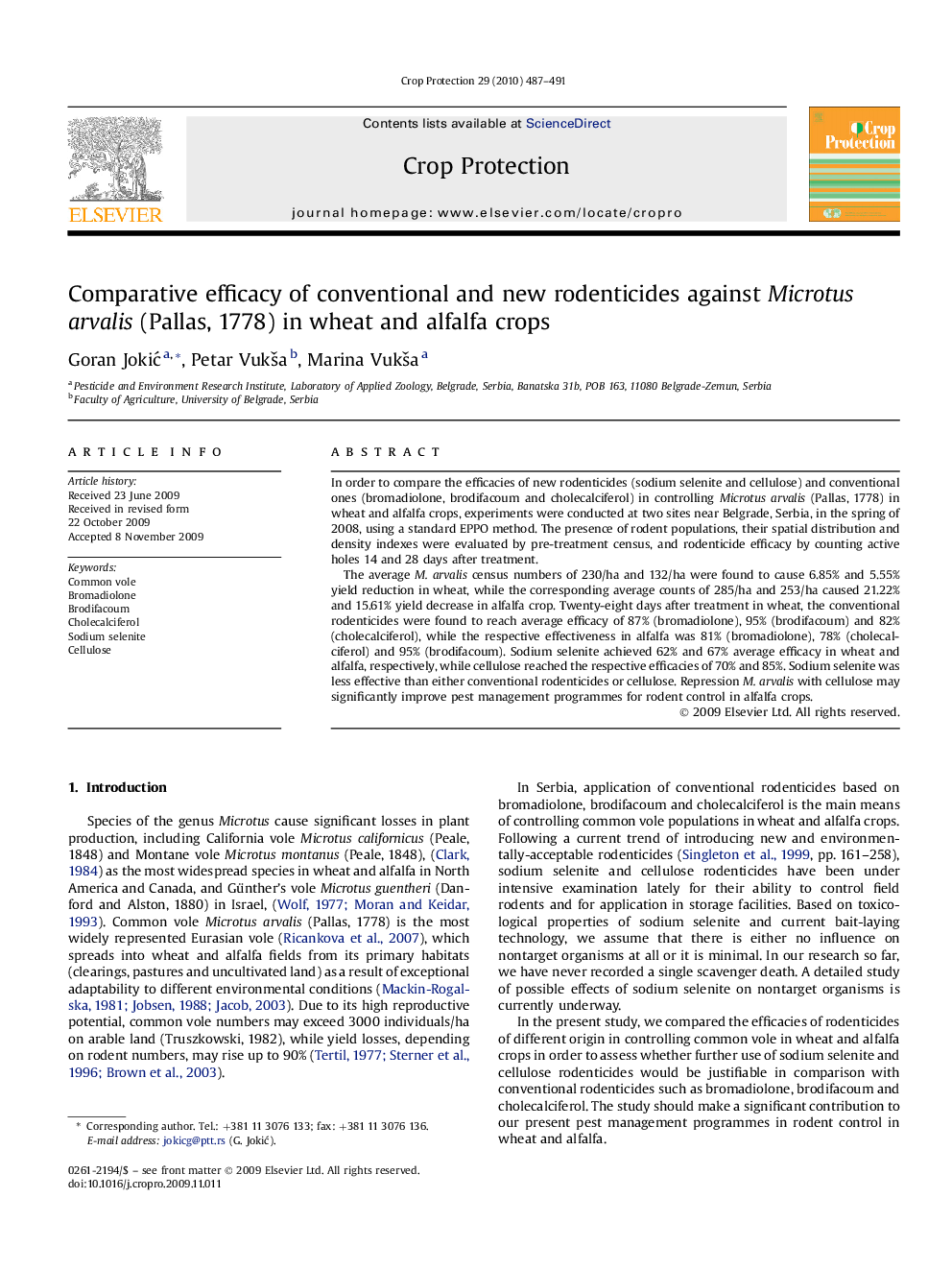| Article ID | Journal | Published Year | Pages | File Type |
|---|---|---|---|---|
| 4506904 | Crop Protection | 2010 | 5 Pages |
Abstract
The average M. arvalis census numbers of 230/ha and 132/ha were found to cause 6.85% and 5.55% yield reduction in wheat, while the corresponding average counts of 285/ha and 253/ha caused 21.22% and 15.61% yield decrease in alfalfa crop. Twenty-eight days after treatment in wheat, the conventional rodenticides were found to reach average efficacy of 87% (bromadiolone), 95% (brodifacoum) and 82% (cholecalciferol), while the respective effectiveness in alfalfa was 81% (bromadiolone), 78% (cholecalciferol) and 95% (brodifacoum). Sodium selenite achieved 62% and 67% average efficacy in wheat and alfalfa, respectively, while cellulose reached the respective efficacies of 70% and 85%. Sodium selenite was less effective than either conventional rodenticides or cellulose. Repression M. arvalis with cellulose may significantly improve pest management programmes for rodent control in alfalfa crops.
Related Topics
Life Sciences
Agricultural and Biological Sciences
Agronomy and Crop Science
Authors
Goran JokiÄ, Petar VukÅ¡a, Marina VukÅ¡a,
